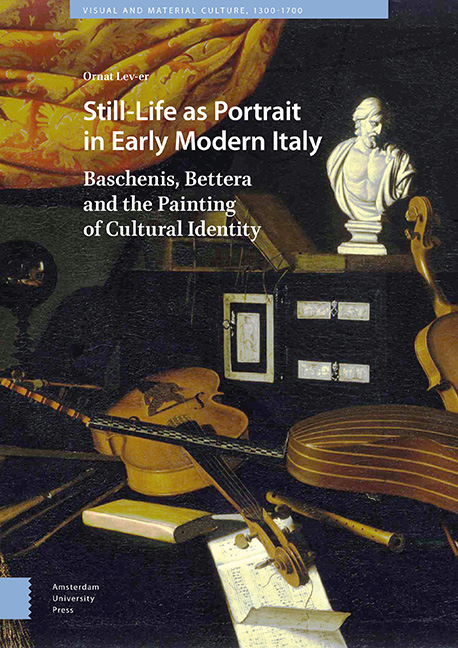 Still-Life as Portrait in Early Modern Italy
Still-Life as Portrait in Early Modern Italy Summary
This chapter begins with a presentation of the two artists at the centre of this study: Evaristo Baschenis and Bartolomeo Bettera, both natives of the Italian city of Bergamo and known as painters of still-life paintings with musical instruments. It will reveal that there is an impressive amount of available information regarding Baschenis's biography, while much less is known about the life of Bettera.
Next, I show how a painting's subject largely determined its status in the eyes of artists, theoreticians, patrons, and collectors, and situate the genre of still-life within this hierarchy. I describe the characteristic features of seventeenth-century painting in Lombardy, which are present also in the works of Baschenis and Bettera. I argue that paintings featuring various objects and musical instruments do not necessarily represent the theme of vanitas as they are typically interpreted, and propose other, non-traditional meanings for the representations of these objects in the paintings. I present the approaches of scholars of still-life painting in general and of scholars who have written on the still-life paintings of Baschenis and Bettera in particular. From this survey of the current state of research will emerge the contours of the present study, in which I treat the objects in the ‘still-life with musical instruments’ paintings as a vehicle for expressing views on controversial issues, and for expressing cultural and knowledgeable statements by both painter and viewer. In this genre of painting, the ‘still’ of the genre's title appears to be an oxymoron to a representation of the intellectual, cultural, and dynamic world of the early modern educated man. But, as will be shown, it is not so.
Concluding this chapter is a survey of the Bergamo cultural landscape that allowed Baschenis and Bettera to convey complex and challenging messages in their works, and allowed the aristocratic and erudite audiences of these works to find in them much more than a collection of objects scattered on a table in a closed room.
- Type
- Chapter
- Information
- Still-Life as Portrait in Early Modern ItalyBaschenis, Bettera and the Painting of Cultural Identity, pp. 31 - 70Publisher: Amsterdam University PressPrint publication year: 2019


